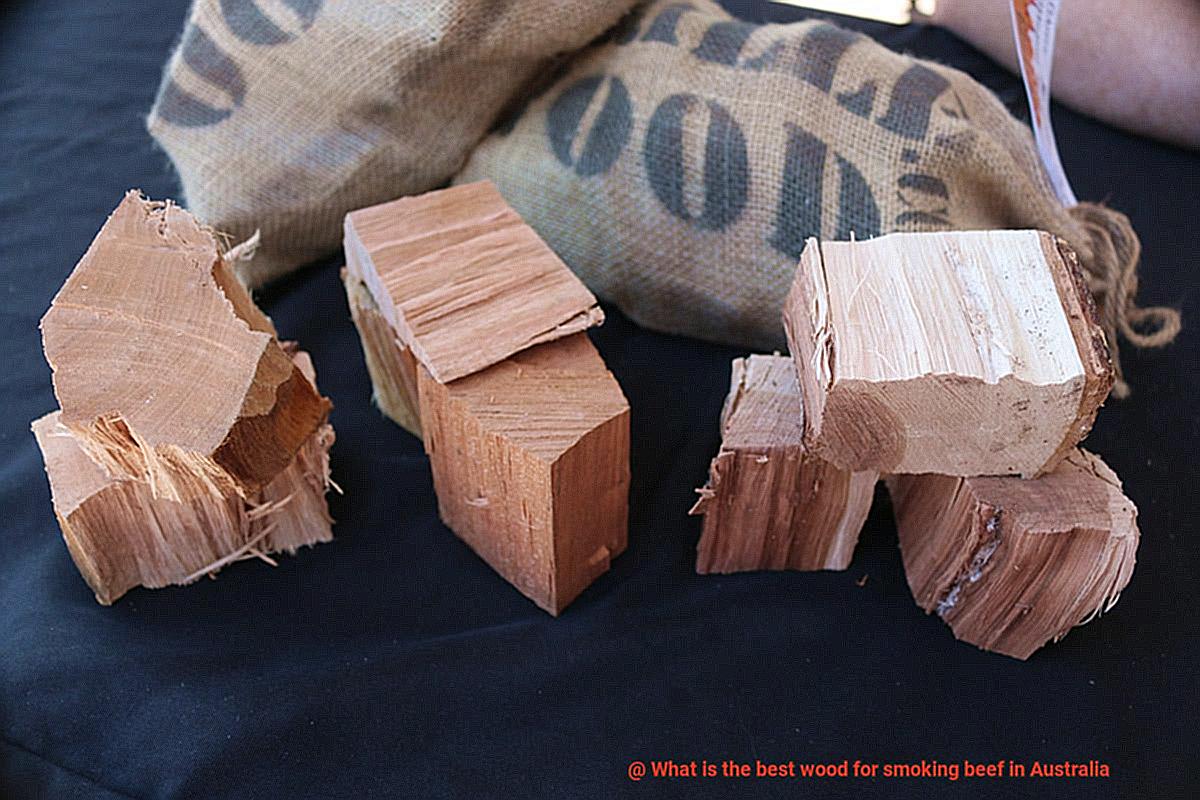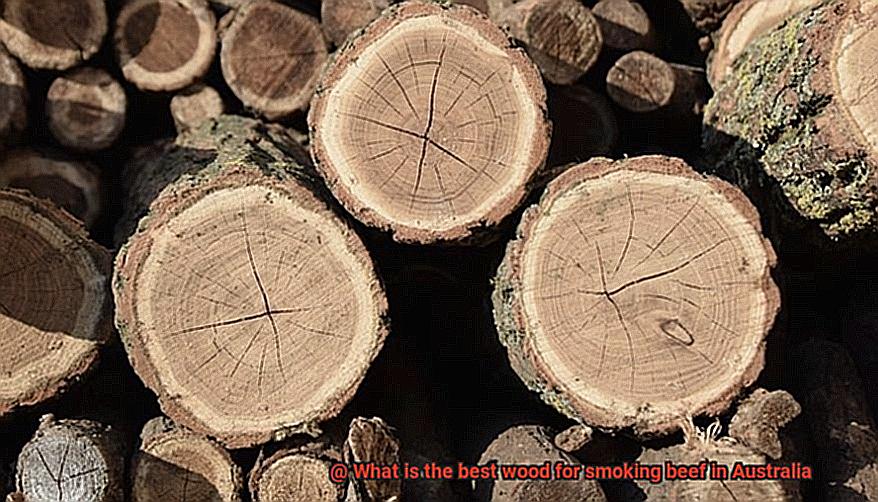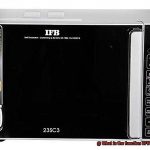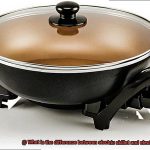Are you a meat enthusiast always on the lookout for new ways to prepare your favorite dish? Look no further. Today, we’re diving deep into the world of beef smoking and answering the question that many Australian meat lovers ask: What is the best wood for smoking beef in Australia?
Smoking meat is an ancient cooking method that involves exposing meat to smoke from burning wood for an extended period. This process gives it a unique smoky flavor and tender texture. In Australia, there are various types of wood available for smoking beef, but not all of them are created equal.
Choosing the right wood can make all the difference in terms of flavor and cooking time. Some woods burn hotter and faster than others, while some give a distinct flavor that can make or break your beef’s taste.
In this blog post, we’ll explore the different types of wood commonly used for smoking beef in Australia. You’ll learn about popular options like hickory, mesquite, and oak, as well as some lesser-known choices like pecan and fruitwoods. So let’s get started – who knows? You might just find a new favorite wood for smoking your beef.
Contents
Ironbark: The Popular Choice for Smoking Beef in Australia
Smoking beef is a revered cooking technique in Australia, and the type of wood used can make all the difference in the flavor and quality of the meat. Among the various types of wood available, one has gained a reputation for producing delicious results – ironbark.
Ironbark is a dense and slow-burning hardwood, sourced from the eucalyptus tree, native to Australia. It imparts a strong smoky flavor to the meat, making it a popular choice among pitmasters and grill enthusiasts across the country. Here are some reasons why ironbark is the preferred choice for smoking beef in Australia:
- Consistent Heat: Ironbark produces an even and consistent heat throughout the smoking process. This ensures that the meat is cooked evenly and has a delicious smoky flavor. It’s especially useful for smoking larger cuts of beef that require extended cooking times.
- Long Burning Time: Ironbark burns for an extended period without requiring replenishment, making it an ideal choice for smoking briskets that can take up to 12 hours to cook.
- Unique Flavor Profile: Ironbark produces a unique flavor profile that sets it apart from other woods. The smoky flavor is intense and robust, with hints of sweetness and a slightly spicy aftertaste. It adds depth and complexity to smoked meats, making it an excellent choice for those who want to experiment with flavors.
- Locally Available: Ironbark is readily available in Australia, making it a cost-effective option for regular use.

While ironbark is undoubtedly a popular choice for smoking beef in Australia, other types of wood can also produce delicious results. Hickory, mesquite, applewood, cherrywood, and oak are all great options that can enhance the taste of beef. Ultimately, the best wood for smoking beef in Australia will depend on personal preference and the specific cut of meat being smoked.
Hickory: A Sweet, Smoky Flavor That Pairs Well with Beef
This wood is derived from the hickory tree, a species native to North America but also grown in Australia.
Hickory wood has a strong aroma that can easily overpower the meat if used in excess. That’s why it’s crucial to use it sparingly and in combination with other woods like mesquite or oak to create a balanced flavor profile. Additionally, hickory wood can produce a lot of smoke, so it’s best to use it in an outdoor smoker or grill with proper ventilation.
What sets hickory apart from other woods is its ability to bring out the natural sweetness of beef while adding a smoky depth of flavor. This makes it an ideal choice for smoking brisket, ribs, and other cuts of beef that benefit from a rich and complex taste. However, its bold flavor may not be as well-suited to lighter meats like pork and chicken.
So why not take your beef dishes to the next level with hickory wood? Just remember to use it correctly and in moderation for the best results. To summarize, here are some key points to keep in mind:
- Hickory wood is a popular choice for smoking beef in Australia due to its sweet and smoky flavor.
- Use hickory sparingly and in combination with other woods for a balanced flavor profile.
- Hickory brings out the natural sweetness of beef while adding a smoky depth of flavor.
- Hickory may not be as well-suited to lighter meats like pork and chicken.
- Use hickory in an outdoor smoker or grill with proper ventilation.
Mesquite: An Earthy Flavor Perfect for Southern Regions
Look no further than mesquite wood – a bold, earthy flavor that is perfect for southern regions.
Mesquite wood is native to the arid regions of the Southern United States and Mexico, making it an authentic choice for those who want to add a regional touch to their cooking. Its high concentration of lignin, a complex organic polymer found in plant cell walls, gives mesquite wood its unique aroma and taste.
But it’s not just about authenticity – mesquite wood is also known for its rich depth of flavor. When used to smoke beef, it can withstand high temperatures without burning too quickly, resulting in a slow and steady infusion of smoky goodness into the meat.
And let’s not forget about the practical benefits. Mesquite wood produces very little ash, making cleanup a breeze. It also burns cleanly, without any unpleasant smoke or fumes.
In summary, mesquite wood is an excellent choice for adding a regional and bold flavor to your barbeque. Here are some more reasons why:
- Mesquite wood is perfect for smoking beef due to its ability to withstand high temperatures without burning too quickly.
- Its unique flavor comes from the high concentration of lignin found in the wood.
- Mesquite wood produces very little ash and burns cleanly.
- It is an authentic choice for those who want to add a regional touch to their cooking.
Applewood: Enhancing the Taste of Beef
If you’re looking to add a subtle yet delicious smoky flavor to your beef dishes, applewood is the way to go. This wood, derived from apple trees, is renowned for its mild and fruity flavor profile that enhances the natural taste of beef without overpowering it. It’s no wonder why applewood is a popular choice in Australia for smoking beef.
To get the most out of applewood, it’s crucial to ensure that the wood is properly seasoned and dried before use. Using green or unseasoned wood can result in a bitter taste and unpleasant smoke. Fortunately, applewood chips or chunks are readily available at most barbecue supply stores and can be used in conjunction with charcoal or other hardwoods.
What’s great about applewood is that it can be used with a variety of beef cuts – brisket, ribs, steak, you name it. The mild flavor of the wood complements the natural taste of the meat, resulting in a delicious smoky taste that will impress even your pickiest guests.
But it’s not just about taste – applewood also provides a beautiful color to the meat. The smoke produced by this wood creates a reddish-brown hue that is both appetizing and visually appealing. Your beef dishes will look as good as they taste.
Cherrywood: Adding a Fruity Note to Your Smoked Meat
This Cherrywood is known for its sweet and fruity aroma that adds a unique flavor to beef, making it a favorite among barbecue enthusiasts in Australia. Here’s why cherrywood is such an excellent option for smoking meat.
Cherrywood smoke is mild, infusing the meat with a delicious flavor without overpowering its natural taste. The result is a savory and mouthwatering dish that’s sure to impress your guests. Plus, cherrywood’s versatility means it pairs perfectly with all types of meat, including beef, pork, and poultry.
To make the most of cherrywood’s delicious flavor, it’s crucial to use the right amount of wood. Too much smoke can make the meat bitter, while too little can result in a lack of flavor. Using a few chunks of cherrywood during the smoking process is recommended. Avoid using chips as they burn too quickly, which could result in unevenly flavored meat.
One of the best things about cherrywood is its availability. You can easily find cherrywood chunks or logs at most barbecue supply stores or online. This makes it a convenient option for those who want to experiment with different wood types.
Oak: A Classic Choice for Smoking Beef
When it comes to choosing the perfect wood for smoking, oak is a classic choice in Australia. Oak is renowned for its mild flavor, which allows the natural taste of the beef to shine through without overpowering it with smoke.
But oak’s benefits don’t stop there. It also burns slowly and evenly, making it an ideal choice for larger cuts of beef that require longer cooking times. This ensures that your beef is cooked to perfection with a smoky flavor that permeates throughout.
Oak is also incredibly versatile and can be used in various forms, like chunks, chips, or even charcoal made from oak wood. This makes it adaptable to different grilling setups and cooking styles. Whether you’re using a large pit or a smaller smoker, oak chunks and chips can provide consistent flavor profiles.
What’s more, oak is readily available in Australia thanks to an abundance of oak trees. This means that sourcing quality oak wood for smoking isn’t just easy but also affordable compared to other types of smoking woods.
It’s essential to note that different types of oak wood can affect the flavor profile of your beef. For example, white oak has a milder flavor compared to red oak, which has a stronger and more distinct taste. Therefore, choosing the right type of oak wood depending on the desired flavor profile is crucial.
Experimenting With Different Woods and Flavor Combinations
It’s time to spice things up by experimenting with different woods and flavor combinations when smoking beef in Australia. As a seasoned expert in this field, I can assure you that selecting the right wood can make a world of difference in enhancing your meat’s taste and aroma.
In Australia, hickory is a classic choice for its bold flavor, while mesquite adds a sweet taste and strong smokiness. Oak is a milder option that provides an excellent base flavor for your beef, while applewood and cherrywood are fruitier options that add a subtle sweetness. Pecan is an excellent choice for those who prefer a nutty flavor in their smoked beef.
But here’s where things get exciting – flavor combinations. The possibilities are endless. Some popular options include blending hickory and mesquite for a bold and smoky taste or combining cherrywood and applewood for a sweeter flavor profile. You may also mix different ratios of woods to customize your blend, creating unique flavors that reflect your preferences.
It’s important to remember that too much wood can overpower the natural flavor of your beef. Therefore, start small and adjust as needed until you find the perfect balance of flavors. Keep in mind that trying different cuts of beef can also add new dimensions to your experiments, as each cut has unique characteristics.
FYkoV6bmBJQ” >
Conclusion
In conclusion, smoking beef is an art form in Australia, and the type of wood used can make or break the final product. While ironbark has earned a reputation for producing mouth-watering results, there are other woods that are equally as impressive. Hickory’s sweet and smoky flavor complements beef perfectly, while mesquite adds an earthy dimension that is ideal for southern-style dishes. Applewood’s fruity notes enhance the natural taste of beef without overpowering it, while cherrywood provides a unique sweetness to smoked meat. And let’s not forget about oak – a classic choice that allows the true flavor of beef to shine through.
The beauty of smoking beef lies in experimentation – mixing and matching different wood flavors to create your own signature blend. Whether you prefer a bold and smoky taste or something sweeter and fruitier, there are endless possibilities to explore. Why not try blending hickory and mesquite for a robust flavor profile? Or perhaps combine cherrywood and applewood for a sweeter finish? The options are limitless.
So next time you’re looking to impress your guests with a delicious smoked beef dish, remember that the key ingredient is in the wood you choose. With these options available, you can customize your blend to create unique flavors that reflect your preferences.






